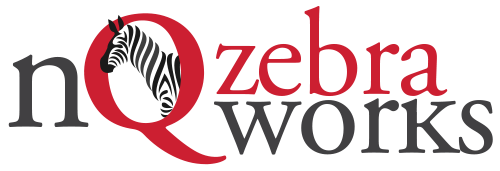Essential Takeaways
- Law firms face challenges in streamlining document management while ensuring security, collaboration, and efficiency in the digital age.
- Traditional methods like scan-to-folder and scan-to-email are favored due to simplicity but have limitations, such as cumbersome user experiences, lack of audit trails, and redundant practices.
- Queues for Outlook is introduced as a superior alternative, offering a better user experience, instant access, mobile compatibility, workflow security, and streamlined document management.
- Queues addresses shortcomings of traditional methods by providing meticulous audit trails, seamless collaboration, and security and access control, offering a transformative solution for modern legal practices.
As the legal technology landscape evolves, law firms are constantly challenged to streamline document management processes while maintaining security, collaboration, and efficiency. The digitization of document workflows has become an essential part of this transformation. However, it’s not as simple as choosing between scan-to-email, scan-to-folder, or other methods.
While the traditional methods of scan-to-folder and scan-to-email have served their purpose, they fall short in addressing the complex demands of modern legal workflows. IT departments face a significant challenge when instituting change: users. Technology adoption hinges on user experience; if the software or workflow doesn’t align with how the user currently operates, the likelihood of adoption is low. Hence, most firms rely on scan-to-email and scan-to-folder as the primary scanning workflow.
User experience is paramount in technology adoption. If legal professionals find a workflow cumbersome or unfriendly, they are less likely to embrace it. Scan-to-email and scan-to-folder options are favored because they are straightforward and require minimal user input at the multifunctional device (MFD)."
Why Law Firms opt for Scan-to-Email and Scan-to-Folder
At first glance, scan-to-folder and scan-to-email seem convenient for lawyers and legal professionals seeking to digitize their documents: it’s easy. The user doesn’t have to enter information or spend longer at the MFD. However, our extensive experience has revealed significant limitations that hinder the true potential of these methods. Clients often requested functionalities like scanning directly to email or document management systems (DMS), only to find that these methods did not align with the actual needs of their workflows.
User Experience
User experience is paramount in technology adoption. If legal professionals find a workflow cumbersome or unfriendly, they are less likely to embrace it. Scan-to-email and scan-to-folder options are favored because they are straightforward and require minimal user input at the multifunctional device (MFD).
Pre-Profiling Complexity
One recurring challenge is the time-consuming process of pre-profiling documents and assigning proper client and matter information at the multifunctional device (MFD). Lawyers want a seamless experience that minimizes their time at the device, enabling them to return to their desks to continue their work quickly. Despite initial intentions, users would frequently revert to more straightforward methods, compromising the accuracy and organization of their document management.
Lack of Audit Trail and Tracking
Moreover, the absence of an audit trail and tracking mechanism in scan-to-folder raises concerns about document integrity, deadline management, and potential oversight. Collaboration becomes an ordeal as users often store documents in their personal folders, isolating valuable information from colleagues and attorneys. The absence of an efficient way to grant access or notify others about relevant documents further exacerbates these issues.
Redundant Practices
Surprisingly, our interactions with various law firms have revealed the unintended consequences of the scan-to-folder approach. In one instance, a firm discovered that its users were duplicating documents by scanning a folder and emailing the same document to their attorneys. This redundant practice increased the likelihood of multiple copies and hindered effective version control.
Resistance to Workflow Change
A significant factor influencing technology adoption within law firms is the inclination to follow the path of least resistance. IT departments often yield to user preferences, even if they may not align with the most secure and efficient workflows. Legal professionals are resistant to change, especially when digitizing paper documents. As a result, scan-to-email and scan-to-folder options are chosen initially due to their perceived simplicity.
Queues: A Paradigm Shift in Document Management
Recognizing the limitations of traditional document management methods, we developed Queues for Outlook—a superior alternative, redefining how law firms handle, share, and manage legal documents. Queues replicates the ease of use while providing the firm with the necessary workflow without burden to the user.
- A better user experience – the best user experience is the one attorneys are already using – Outlook.
- Instant access – users receive scans instantly, regardless of where they are at in the process (even before OCR has been completed).
- Work From Anywhere – Queues for Outlook runs everywhere Outlook runs, including mobile devices, working in concert with the nQzw mobile scan and print app.
- Workflow security – Queues for Outlook extends the discipline of your firm’s information governance and security as documents remain in the users’ Queue within the firm’s infrastructure and behind its firewall.
Queues for Outlook has all of the advantages of scan-to-email and scan-to-folder, with none of the downsides, and is part of our document workflow suite, which includes ScanQ.
When scanning documents using ScanQ, users can easily designate their documents to a specific queue with just one click. This eliminates the need for elaborate pre-profiling at the MFD and empowers legal professionals to focus on their core tasks. Its robust feature set that addresses the shortcomings of the scan to folder and email truly sets Queues apart:
- Audit Trails and Oversight: With Queues, every document’s journey is meticulously tracked, creating an indelible audit trail. This ensures that deadlines are met, oversight is maintained, and accountability is enforced.
- Seamless Collaboration: Queues introduces a groundbreaking approach to collaboration. Users can create queues accessible to authorized colleagues and attorneys, fostering seamless collaboration while maintaining document security.
- Security and Access Control: Based on security settings and roles assigned by the firm, users can edit documents directly within their queues, ensuring document integrity and access control.
The traditional methods of scan-to-folder and scan-to-email are increasingly proving inadequate for the complex demands of modern legal practice. Queues offers a transformative solution that combines efficiency, collaboration, security, and accessibility into a single, cohesive platform. By embracing the power of Queues, law firms can redefine their document management practices and usher in a new era of streamlined and effective legal workflows.
Author



